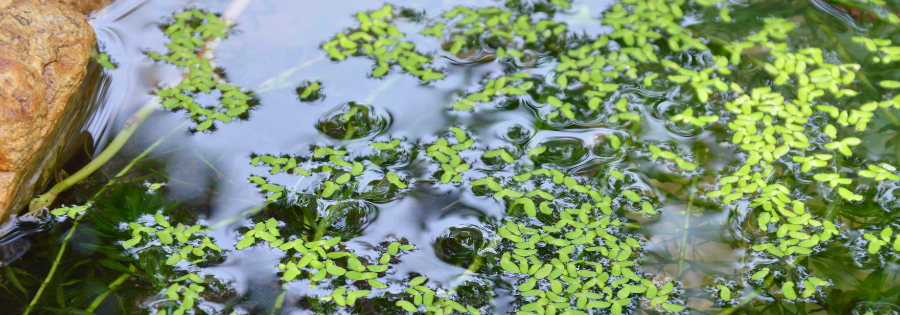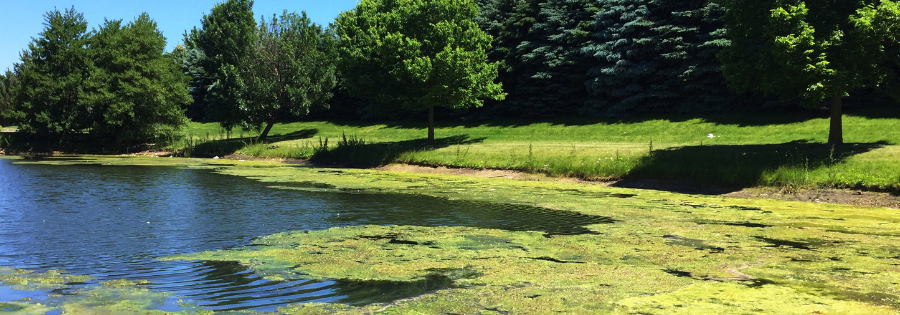Keeping Your Waters Pest-Free with Aquatic Pest Control

If you’re responsible for a large body of water, waterway, bayou, river, or lake, aquatic pest control is usually required. Here’s why.
Is The Wrong Vegetation Destroying Your Lake or Pond?
Whether you’re working for a park service or a chemical company, if you’re responsible for maintaining the health of a body of water, you know how critical the task is. If the wrong vegetation negatively affects your ponds, waterways, bayous, rivers, or lakes, you must identify and fix the problem quickly.
Problems Caused by the Wrong Vegetation
Too much, or the wrong type of vegetation, can impact the bodies of water for which you’re responsible. For example, aquatic pests can:
- Limit access to swimming. No one wants to swim in a lake with an odd color or noxious odor. In addition, when plants on or under the water grab at a swimmer’s arms and feet, visitors will find other places to go.
- Limit access to fishing. Aquatic pests can remove oxygen from the water and kill off fish or stunt their growth. Even if the fish are thriving, there may be a noticeable change in the flavor of an angler’s catch.
- Limit access to boating. It doesn’t matter if you’re dealing with recreational boaters or the boats you use to maintain a body of water; water traffic will stop if unwanted vegetation becomes entangled in the boats’ propellers.
- Limit access to clean water that is required by several industries.
Learn more about aquatic plant control in your pond.
4 Aquatic Pests You Need to Manage
Your first step is to identify the vegetation that is causing your problem. Several categories of weeds can pose a problem.
1. Algae
Small amounts of algae don’t usually cause health or environmental problems. But, when algae growth gets out of control, you can face major issues. An overgrowth of algae is typically called an algal bloom. Some blooms are toxic and can poison or kill people and animals.
In addition, industries that need clean water for their operations can be shut down if algae growth is unchecked. With slow-moving water, sunshine, and enough nutrients, algae can quickly get out of control.
2. Emergent Weeds
Emergent weeds grow along the shoreline and mature to heights above the waterline. These weeds establish a root system that helps them to remain in place. Additionally, these are hardy plants like cattails and shoreline grass that stand up to wind and weather.
3. Floating Weeds
Some floating weeds anchor themselves with roots attached to the bottom of a body of water. Other floating plants don’t have any attached roots and simply float on the water’s surface. Plants in this category include duckweed, water lilies, and water hyacinth. While some of these floating weeds are pretty to look at, in high enough numbers, they can choke off the light and oxygen to the fish swimming below.
4. Submerged Weeds
Submerged weeds have soft stems, usually preventing them from rising above the water’s surface. Plants in this category include pondweed, coontail, and hydrilla.
The Importance of Effective Aquatic Pest Control
Effective aquatic pest control plays a vital role in preserving the delicate balance of our ecosystems and safeguarding the health of our waterways. Here are a few examples of why it’s so important.
Threats to Native Species and Ecosystems
Controlling aquatic pests is of utmost importance due to their numerous threats to native species and ecosystems. Invasive aquatic species can devastate native plants and animals by preying on them, out-competing them for resources, spreading diseases, and causing habitat destruction.
These interactions can lead to the extinction of native species, disrupt the balance of ecosystems, and permanently alter habitats. The displacement and competition caused by invasive species can also harm biodiversity and ecological stability.
Impact on Human Activities, such as Fishing and Recreation
Aquatic pests not only pose a threat to native species and ecosystems but also have a significant impact on human activities, such as fishing and recreation. Invasive species can directly affect fish populations by preying on them or competing with them for food and habitat.
They can also indirectly impact fish and other aquatic organisms by contaminating their food sources with pesticides and toxins. This can lead to a decline in fish populations, affecting the livelihoods of fishermen and the enjoyment of recreational activities such as fishing and boating.
Economic Costs of Aquatic Pest Infestations
Aquatic pest infestations can result in significant economic costs. Invasive species have been estimated to cause annual economic impacts exceeding $120 billion in the United States.
These costs arise from various factors, including the control and prevention of invasive species, the loss of agricultural productivity, and the damage to infrastructure such as water treatment plants and power stations. The costs of preventing and controlling invasive species are often high, making investing in effective pest control measures to mitigate these economic burdens essential.
Aquatic Pest Control Methods
Aquatic pest control methods are used to manage and eradicate unwanted invasive species in bodies of water. Here are some commonly used methods:
- Mechanical Control: This method involves manually removing aquatic pests or using tools and equipment. Techniques such as netting, trapping, and hand-picking are employed to physically remove pests from the water.
- Chemical Control: Chemical control methods involve using pesticides, herbicides, or algaecides to kill or control aquatic pests. These chemicals are carefully selected to target specific pest species while minimizing harm to desirable aquatic life and the environment.
- Biological Control: Biological control methods involve introducing natural predators, parasites, or pathogens that specifically target the pest species. This method establishes a natural balance between pests and their predators, effectively reducing populations without chemical interventions.
- Biomanipulation: Biomanipulation involves altering the composition of the aquatic ecosystem to favor the growth of desirable species that naturally control pest populations. This method aims to create an ecological imbalance that suppresses the growth and reproduction of unwanted pests.
- Physical Barriers: Physical barriers such as screens, nets, or fencing can be used to physically restrict the movement of aquatic pests. These barriers prevent pests from accessing certain areas or protect desirable plants and animals from infestation.
- Environmental Control: This method involves modifying the environment to make it less favorable for pest species. Techniques such as water level manipulation, aeration, or altering nutrient levels can disrupt pests’ habitat and reproductive cycles, reducing their populations.
It is important to note that selecting the appropriate pest management method depends on various factors, such as the type of pest, the level of infestation, the sensitivity of the surrounding ecosystem, and regulatory considerations. Integrated Pest Management (IPM) approaches that combine multiple methods are often utilized to achieve effective and sustainable aquatic pest control.
Discover Coastal Spray Aquatic Pest Control Services
For your own peace of mind, you’ll need an aquatic control program that fits your needs. It’s always a good idea to consult a firm with long years of aquatic vegetation removal experience who can do a professional job for you. Coastal Spray is here to help.
Take the plunge and contact Coastal Spray for aquatic pest control services today!
